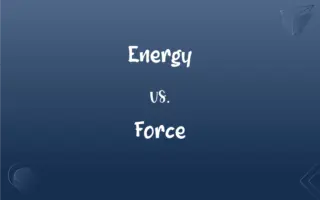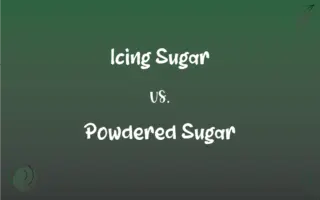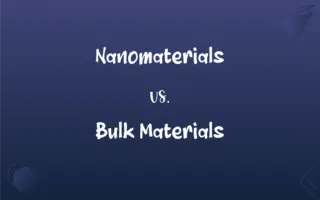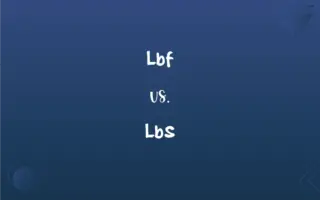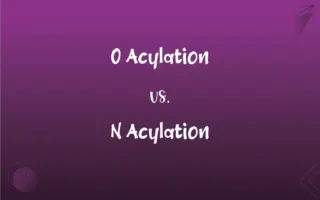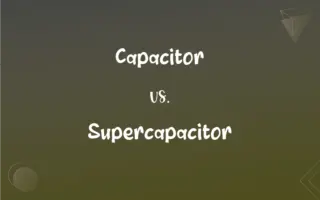Solid vs. Liquid: What's the Difference?
Edited by Janet White || By Harlon Moss || Updated on October 17, 2023
A solid has a definite shape and volume, while a liquid has a definite volume but takes the shape of its container.
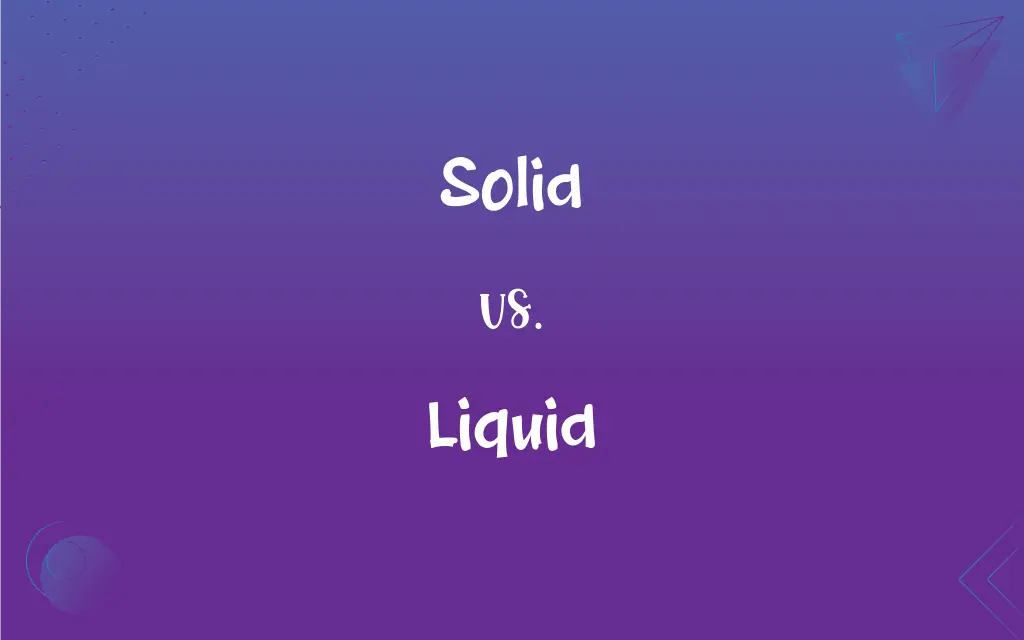
Key Differences
In the realm of physical states, both solid and liquid represent two fundamental phases of matter. A solid, by nature, possesses a rigid structure, maintaining a fixed shape and volume regardless of its environment. On the other hand, a liquid displays fluidity, retaining a consistent volume but freely adapting its shape based on the container it occupies.
Molecular interactions offer further insight into the nature of solids and liquids. Within a solid, particles (like atoms or molecules) are closely packed, vibrating around fixed positions, leading to its definitive shape and rigidity. Conversely, in a liquid, these particles are less tightly packed, allowing them to move more freely, giving liquids their characteristic fluidity while still maintaining volume.
Temperature plays a pivotal role in transitioning between solid and liquid states. As heat is applied to a solid, its particles gain energy, causing them to vibrate more vigorously. Once a specific threshold, known as the melting point, is surpassed, the solid transforms into a liquid. Conversely, when a liquid is cooled to its freezing point, it becomes a solid.
Another fascinating distinction between solid and liquid is their response to pressure. Generally, compressing a solid doesn't significantly change its volume due to the already close proximity of its particles. In contrast, most liquids are nearly incompressible; however, unlike solids, they can be forced into smaller volumes under extreme pressures.
To summarize, while both solid and liquid are fundamental states of matter, they differ in shape retention, particle movement, and response to temperature and pressure. Solid remains rigid, while liquid showcases adaptability in shape, driven by distinct molecular behaviors.
ADVERTISEMENT
Comparison Chart
Shape
Definite
Takes the shape of its container.
Volume
Definite
Definite
Particle Arrangement
Closely packed, fixed positions
Less tightly packed, free movement
Response to Heat
Melts to become a liquid at its melting point
Freezes to become a solid at its freezing point
Compressibility
Generally not compressible due to tight particle packing
Nearly incompressible but can be slightly compressed under extreme pressures
ADVERTISEMENT
Solid and Liquid Definitions
Solid
Firm and stable in shape; not fluid.
The chocolate turned solid after being in the refrigerator.
Liquid
Material with particles that flow freely, fitting the shape of their container.
Mercury is a metal that remains liquid at room temperature.
Solid
A state of matter with a fixed shape and volume.
Ice is the solid form of water.
Liquid
Assets that can be quickly converted into cash.
His liquid assets were substantial.
Solid
Material characterized by closely packed particles.
The table was made of a solid piece of wood.
Liquid
A state of matter with a definite volume but no fixed shape.
Water is a liquid at room temperature.
Solid
Dependable or reliable.
He gave a solid performance in the play.
Liquid
Fluent or smooth in movement or consistency.
The dancer's liquid movements mesmerized the audience.
Solid
Uninterrupted in space; having no gaps.
The wall was a solid barrier.
Liquid
Clear, pure, and free of obstructions.
His voice was as smooth as liquid gold.
Solid
Of definite shape and volume; not liquid or gaseous
It was so cold the water in the bucket became solid.
Liquid
The state of matter in which a substance exhibits a characteristic readiness to flow and little or no tendency to disperse, and is amorphous but has a fixed volume and is difficult to compress.
Solid
(Mathematics) Of or relating to three-dimensional geometric figures or bodies.
FAQs
What gives a solid its definitive shape?
The closely packed particles in a solid that vibrate in fixed positions give it its shape.
Can a solid become a liquid?
Yes, when heated to its melting point, a solid can turn into a liquid.
Can solids be compressed easily?
Generally, solids are not easily compressible due to their tight particle arrangement.
How do particles in a liquid behave?
They move more freely compared to those in a solid.
Why can a liquid take the shape of its container?
Liquid particles move freely, allowing them to adapt to the container's shape.
Are the particles in a solid stationary?
No, they vibrate but remain in fixed positions.
At what point does a liquid become a solid?
When cooled to its freezing point, a liquid turns into a solid.
How do temperature changes affect liquids?
Liquids can evaporate into gas when heated or freeze into solid when cooled.
How do solids respond to pressure?
Generally, their volume doesn't change significantly due to pressure.
Is it true that metals are always solid?
No, metals like mercury are liquid at room temperature.
Can a solid exist in a vacuum?
Yes, a solid can retain its shape even in a vacuum.
What is a crystalline solid?
It's a type of solid with a regular repeating pattern of its particles.
What happens when a solid, like ice, melts?
It transitions into its liquid form, like water.
Can a liquid be transparent?
Yes, many liquids like water are transparent, but opacity varies among different liquids.
Is it possible to compress a liquid?
Liquids are nearly incompressible, but under extreme pressures, slight compression can occur.
Are all solids hard?
No, while many are hard, some solids like butter or gelatin can be soft.
Is glass a solid or liquid?
Glass is an amorphous solid, often misinterpreted as a supercooled liquid.
Why do some liquids feel thicker than others?
The viscosity or "thickness" of a liquid depends on its internal friction or resistance to flow.
Do liquids always have a wet feeling?
Not always. "Wetness" is more about how a liquid interacts with surfaces and our perception.
Do liquids always flow downwards?
Typically, due to gravity, liquids flow from a higher to a lower level.
About Author
Written by
Harlon MossHarlon is a seasoned quality moderator and accomplished content writer for Difference Wiki. An alumnus of the prestigious University of California, he earned his degree in Computer Science. Leveraging his academic background, Harlon brings a meticulous and informed perspective to his work, ensuring content accuracy and excellence.
Edited by
Janet WhiteJanet White has been an esteemed writer and blogger for Difference Wiki. Holding a Master's degree in Science and Medical Journalism from the prestigious Boston University, she has consistently demonstrated her expertise and passion for her field. When she's not immersed in her work, Janet relishes her time exercising, delving into a good book, and cherishing moments with friends and family.








